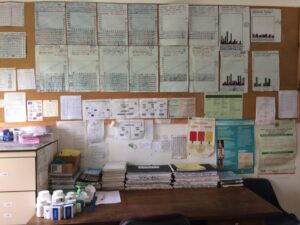RGH Video Blog: Partnerships in Global Health
Hello and welcome to the Global Health Video Class. My name is Dr. Elvira Beracochea and I am the President and CEO of Realizing Global Health. We are a consultant company working in global health to deliver quality health care for everyone, everywhere, every day. Today, is the last topic in our series of the 7 components of building a sustainable, self-reliant health system in a country that can grow, develop and serve its people in a way that they should be served.
The 7th component is partnerships. The 1st component is the health system, the structure of the health system. The 2nd component is the health programs that are run through the health system to make sure that they are then transferred and translated into services (#3) that are provided by health providers (doctors, nurses, etc.) that form the health team (#4). The 5th component is the ownership and the leadership of the local authorities. The country’s leadership and ownership of the whole development of the health system process is essential for the system to grow and become a self-reliant sustainable health system. We also talked about the importance of having a community-based approach to developing the health system.
Today, we are going to talk about partnerships. Nobody can achieve anything on their own. We all work in partnerships. Some partnerships are better than others. Now, we are going to talk about what really makes a good partnership. Donors, governments, health providers, professional organizations, faith-based organizations, civil society, and private sector – everyone has to work together because we are all part of the same country, we are all part of the same planet. We are all part of the health of the human species. We aren’t going to another planet, so we have to work together and improve this one.
To work together, I always advocate for the 3 “Cs”. The three Cs are Communication, Coordination and Collaboration. So all of the partners, everyone that is working in global health, needs to work together and communicate what they are doing. Sometimes, it is not just enough to put it up on your website or write a report. You need to actually communicate and spend time sitting down with everybody who is impacted by what you are doing. You need to make sure they are aware of what you are doing and make sure you understand what they are doing, what their pain points are and how you can complement each other.
The second point is to coordinate. It’s not enough to plan a very interesting training program for community health workers. You need to coordinate with other people that are also training, specifically the country’s training institutions such as the medical schools, the school of public health, and the nursing schools, public and private. How do you coordinate what you are doing to make sure it complements what others are doing and strengthens the country?
Next, it’s collaboration. How can you communicate what you do, coordinate what you do and also collaborate? You do that by making sure everything you do is under the umbrella of the national health policy. What is the policy in terms of training? If there isn’t one, let’s help create one! What is the policy for family planning, child health or HIV/AIDS? If the policy hasn’t been updated, then let’s work together, collaborate and get it up to standards.
The next component is that you need to be a part of the same health plan. Every year, countries develop their health plan for the coming year. Sometimes there will be a long term strategy or long term plan, usually a 10 or 20 year plan. How does what you do complement what they are doing? Where do you fit in that plan? Make the effort to make sure that you are being a good partner by identifying where you contribute and making that known to everybody.
The next step and the next level of collaboration is to be part of the national health budget. If you do something, make sure that money is accounted for and it is contributing to the national health budget. In this way we know where the money comes from and how the money is working. If your project has an end date, start 2 or 3 years before the project ends to make sure that those activities that you have implemented are then included somehow in the health budget for the following years. Don’t drop things—that is not professional.
The fourth element of a good collaboration, a good partnership is to make sure you are accountable for everything that you do and that you are really contributing to the national health system. We know that the health information systems for most countries are weak, they have their weaknesses. So how can your work contribute to strengthen that? Maybe it’s at the district-level because that is where you are working and your work can contribute to improve that part of the country. Then by coordinating and collaborating with others, the same approach can be duplicated in other areas by others.
So remember, you need to be a good partner. What does being a good partner mean to you? We have reached the end of 2014, so think back to the beginning of the year. What did we do that made us a good partner? Perhaps there were times we didn’t anticipate ways of taking advantage of partnerships. Make it better for next year!
I want to wish you Happy New Year and a peaceful and prosperous 2015. I will see you next time!
Stay in touch with RGH through our weekly email updates, or our weekly video series. Click below to sign up:


